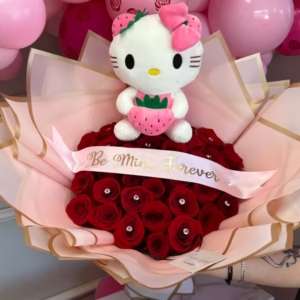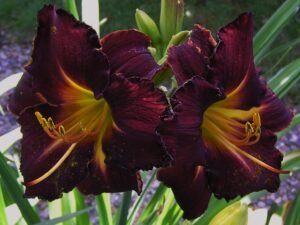The Yellow Chrysanthemum: A Blossoming Symbol of Joy and Prosperity
Introduction
The yellow chrysanthemum, known scientifically as Chrysanthemum morifolium, is a captivating flower that holds a significant place in various cultures around the world. With its vibrant color and intricate petal formations, this flower is not only a visual delight but also a symbol of joy, hope, and prosperity. This article delves into the origins, meanings, cultivation, and uses of the yellow chrysanthemum, highlighting its significance in horticulture and culture.
Historical Significance
Origins
The chrysanthemum has its roots in Asia, particularly in China, where it has been cultivated for over 2,500 years. Originally used for medicinal purposes, the flower gained popularity for its beauty and variety over the centuries. The word “chrysanthemum” is derived from the Greek words “chrysos,” meaning gold, and “anthos,” meaning flower, reflecting the flower’s golden hues.
In China, yellow chrysanthemum are celebrated during the Double Ninth Festival (Chongyang Festival) and symbolize the longevity and vitality of life. They are often associated with the theme of perseverance and the ability to thrive in adverse conditions.
Cultural Significance
In addition to their historical roots, yellow chrysanthemums have deep cultural meanings across various societies. In Japan, they are regarded as a symbol of the sun and represent happiness and positivity. The Imperial Family of Japan has even adopted the chrysanthemum as a crest, emphasizing its royal significance.
In Western cultures, yellow chrysanthemums convey messages of cheerfulness and optimism. They are often given as gifts to brighten someone’s day, representing friendship and well-wishing. This versatility in symbolism makes them a popular choice for floral arrangements in various occasions, from celebrations to sympathy gestures.
Botanical Characteristics
Appearance
The yellow chrysanthemum features vibrant, golden-yellow blooms that can vary in shape, size, and form. The flower heads are composed of numerous ray florets that can be long and thin or short and rounded, creating a full, bushy appearance. The leaves are typically dark green, serrated, and can grow up to six inches long, providing a beautiful contrast to the bright yellow flowers.
Growth Conditions
Chrysanthemums thrive in well-drained soil with a pH level between 6.0 and 6.8. They prefer full sun, requiring at least six hours of sunlight daily. These flowers are hardy and can withstand various weather conditions, making them suitable for a range of climates. They typically bloom in late summer to fall, adding a splash of color when many other plants have started to fade.
Cultivation and Care
Planting
To cultivate yellow chrysanthemums, gardeners should start by selecting healthy plants or seeds from a reputable source. Planting should occur in the spring, after the last frost, to ensure optimal growth. Chrysanthemums can be planted in garden beds or containers, providing flexibility for various gardening styles.
When planting, it’s essential to space the plants about 18 to 24 inches apart to allow for proper air circulation and growth. For those starting from seeds, it’s recommended to start them indoors six to eight weeks before the last frost date and transplant them outdoors when they are sturdy enough.
Watering and Fertilization
Chrysanthemums require consistent moisture but should not be overwatered, as this can lead to root rot. A good rule of thumb is to water the plants deeply once a week, adjusting based on rainfall and soil moisture levels.
Fertilization is crucial for vibrant blooms. Gardeners should use a balanced fertilizer every four to six weeks during the growing season, switching to a phosphorus-rich fertilizer when buds begin to form. This promotes healthy growth and enhances flower production.
Pruning and Deadheading
Regular pruning and deadheading (removing spent flowers) are essential for maintaining the health and appearance of yellow chrysanthemums. Deadheading encourages further blooming and prevents the plant from expending energy on seed production.
Pruning should occur in early spring when new growth starts to emerge. Cutting back the plants to about six inches above the ground helps promote bushier growth and more abundant flowers.
Pests and Diseases
Chrysanthemums are generally hardy but can be susceptible to pests such as aphids, spider mites, and whiteflies. Regularly inspecting plants for signs of infestations and using insecticidal soap or neem oil can help manage these issues.
Common diseases affecting chrysanthemums include powdery mildew, root rot, and botrytis blight. Providing adequate air circulation, avoiding overcrowding, and maintaining proper watering practices can mitigate these risks. If disease does occur, timely intervention with fungicides or removal of affected plant parts is crucial.
Uses of Yellow Chrysanthemums
Floral Arrangements
Yellow chrysanthemums are a popular choice for floral arrangements, thanks to their vibrant color and long-lasting blooms. They can be used in various settings, from weddings to corporate events, and are often paired with other flowers like roses, lilies, and greenery to create stunning displays.
The versatility of yellow chrysanthemums allows them to fit various themes, from cheerful and bright arrangements to elegant and sophisticated designs. They are also commonly used in bouquets and centerpieces, bringing warmth and joy to any occasion.
Symbolism in Gift Giving
Due to their cheerful connotation, yellow chrysanthemum make an excellent gift for various occasions. They are often given on birthdays, anniversaries, or as a gesture of friendship. In times of loss or mourning, yellow chrysanthemums can convey messages of hope and remembrance, providing comfort to those grieving.
Conclusion
The yellow chrysanthemum is more than just a beautiful flower; it is a symbol of joy, hope, and resilience. Its rich history, cultural significance, and versatility in horticulture make it a beloved choice among gardeners and floral enthusiasts alike. Whether used in vibrant arrangements or given as gifts, yellow chrysanthemums continue to brighten our lives and convey meaningful sentiments across cultures.
As we appreciate the beauty of this flower, it is essential to understand its origins and significance, allowing us to foster a deeper connection with nature and the world around us. With proper care and cultivation, the yellow chrysanthemum can thrive in our gardens, bringing cheer and prosperity for years to come.














Post Comment